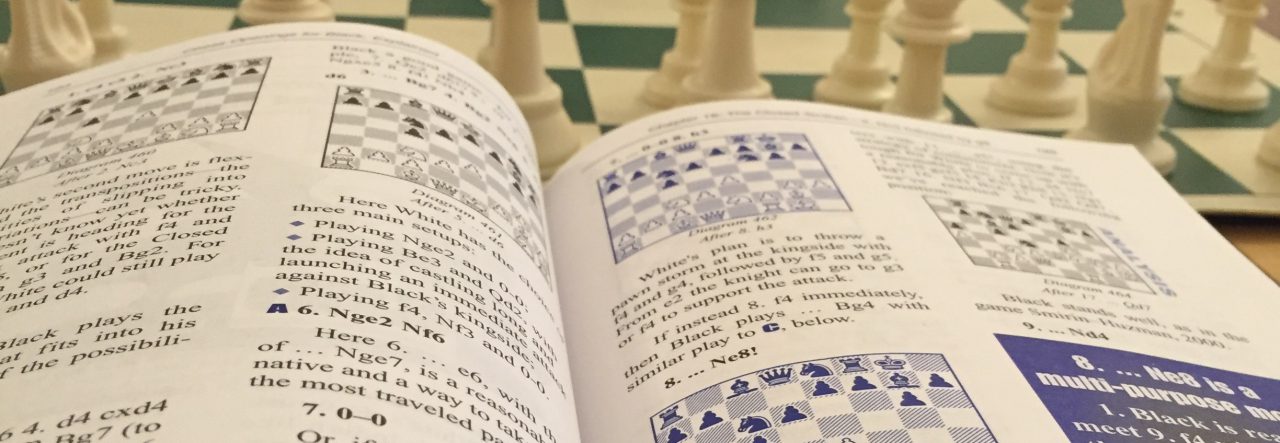
As you may remember, I occasionally post a profile of famous Grandmasters, both retired and current. So far, I’ve shown games from Paul Morphy and Fabiano Caruana, and today, I will add Mikhail Tal to that list. If you consider yourself a tactical guru and enjoy this post, I highly suggest the book The Magic Tactics of Mikhail Tal by Karsten Müller for quality tactics from the Soviet Grandmaster.
For this first game, I would like to show a game from a simultaneous exhibition Tal played in 1958 in Stuttgart, Germany. While the opponent’s name is unknown, this game is considered to be one of Tal’s best
Tal – NN (Stuttgart, 1958)
1.e4 c5 2.Nf3 d6 3.d4 cxd4 4.Nxd4 Nf6 5.Nc3 g6 6.Be3 Bg7 7.f3 Nc6 8.Qd2 Bd7
9.O-O-O White’s intentions are clear. In a true Yugoslav style, Tal will push his pawns on the g- and h-files. Black must find counter play quickly on the queenside in this race position.
9…Qa5 10.Kb1 Rc8 11.g4
11…h6? Black will now find it much harder to castle with white’s pressure on h6. Furthermore, by making this move, Black loses a tempo to expand on the queenside.
12.h4 a6 13.Be2
13…Ne5?! Not the greatest move, Black has yet to improve his position or get his king safe. Now Tal will go for the king.
14.g5 hxg5 15.hxg5 Rxh1 16.gxf6! Sacking the rook! Rxd1+
17.Nxd1!! The only winning option. By attacking the queen via discovery, White gets the critical tempo he needs to win.
17…Qxd2 18.fxg7 Brilliant, just brilliant! Black must stop mate with 18… Be6 but after 19. g8=Q+ Kd7 20. Qxc8+ Kxc8 21. Bxd2 White is up a piece and Black has zero compensation for the lost material. Seeing this, Black resigned. 1-0
Tal was able to win this game because his opponent made two mistakes: 11…h6 and 13…Ne5. When the opponent plays passively or creates weaknesses, you must challenge them!
This next game I want to show Tal played when he was only 13 years old! Still we see the same attacking style and charismatic play from the future World Chess Champion as he wins in a short 16 moves!
Tal – Strelkov (Riga, 1949)
1.e4 e6 2.d4 d5 3.Nd2 dxe4 4.Nxe4 Nd7 5.Nf3 Ngf6 6.Ng3 c5 7.c3 cxd4 8.Nxd4 a6 9.Bd3 Nc5 10.Bc2 e5
11.Qe2! A critical find! Black was probably expecting the knight on d4 to retreat, but with this move, White begins to punish his opponent for wasting the move 10… e5
11…Bd6 12.Ndf5 O-O
13.Bg5 The most principled move. This causes Black a lot of trouble as the queen must always monitor f6.
13…Bc7? This move invites Tal’s response. Black is much worse here, but perhaps 13…Bxf5 is worth a shot? By trading down pieces, Black reduces some pressure in the position.
14.Rd1 Perhaps 14. 0-0-0 is better, but the idea is still the same. Get the rook on the open file.
14…Ncd7 15.Nh5 Bb6 16.Bxf6 Black resigned as 16… Nxf6 is easily met with 17.Nhxg7 +- and 16… gxf6 is not exactly a pretty alternative. 1-0
In this game, Tal was much better after 10…e5?! as he used the critical move 11. Qe2 to gain the initiative. Black was never really able to challenge Tal after that because he pieces were undeveloped. Even in the last position, Black still has a rook on a8 and a bishop on c8 being block by a knight on d7.
This last game was a blitz match, but still shows Tal’s tactical skills with a critical kingside sacrifice against a Grandmaster well known for opening theory innovations, Roman Dzindzichashvili.
Tal – Dzindzichashvili (New York, 1991)
1.e4 c5 2.Nf3 Nc6 3.c3 d5 4.exd5 Qxd5 5.d4 cxd4 6.cxd4 e6 7.Nc3 Qd6 8.Bd3 Nf6 9.O-O Be7
10.Re1 While White does not have a tangible advantage in this advantage, Tal’s mindset is to play aggressively, and gain an advantage due to Black’s blocked in Bishop on c8. If he can obtain an active position and Black fails to find a way to match him, Tal will surely win.
10…O-O 11.Bg5 Rd8 12.Qe2 Nb4 13.Bc4 Bd7 14.Rad1
14…Bc6 A good and thematic idea from Dzindzi! This is a common way to solve the problem of the bishop on c8. While it may seem awkward on c6, the idea is synonymous with a fianchetto on b7. While Black loses the game, this move is a good thematic idea if you are a Sicilian player.
15.Ne5 Bd5 16.Nxd5 Nbxd5
17.Rd3 With the idea of a rook lift to g3. White must act fast before Black gets too much counter play.
17…h6 18.Bc1 Rac8 19.Rg3 Kf8 20.Bb3 Rc7
21.Qf3 Putting the queen on the same file as the king, but will it be in time?
21…Rdc8 22.Bd2
22…a6 A tactical oversight, but since it is a Blitz game, its hard to speculate if Dzindzi saw this idea. Either way, this is a good pattern to know when attacking the kingside pawn structure and king.
23.Rxg7! Kxg7 24.Bxh6+
24…Kh7 Not much here for Black. 24…Kxh6 or 24… Kh8 both lose immediately to 25. Nxf7+ +-. 24… Kg8 isn’t any better as 25. Qg3+ makes for an easy win.
25.Qh3 Ng8 26.Bf8+ Black resigns. 1-0
What can we takeaway from these 3 games? Take advantage of slow development with fast activation. Furthermore, in the first two games, the critical mistakes were both pawn moves. Pawns cannot move backwards, so its always critical to look at weak squares exposed after each pawn move. If you’re picking up a theme between my Grandmaster posts, active play wins games.
Feel like I missed something? Feel free to comment below!









